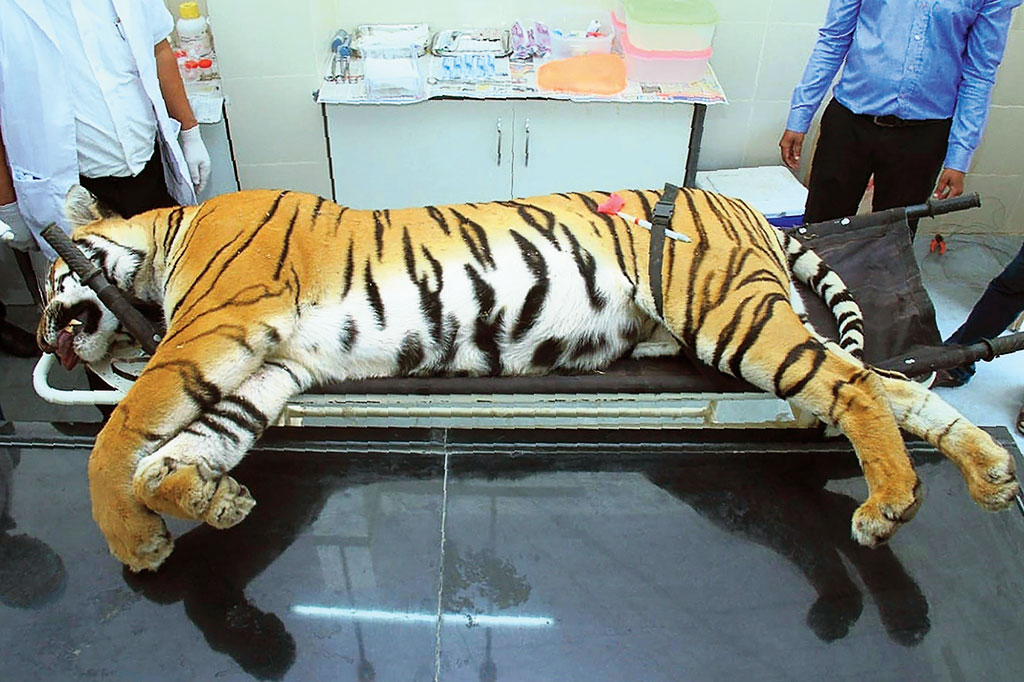As many as a third of Maharashtra’s 204 tigers live outside protected areas, wildlife experts have revealed days after a hunter assisted by forest staff shot dead a tigress that had allegedly killed 13 people in the state since 2016.
“Inside the protected areas, the laws are clear. But because the spill-over population has gone up in the last 10 years, active management is required and robust policies need to be put in place. The same policies will not work,” Anish Andheria, president of the Wildlife Conservation Trust, told The Telegraph from Delhi.
“Forest protection now extracts a price from the people sharing their habitat with the tigers. We have to figure out ways to turn this (tiger conservation) into a benefit for these people as well.”
Avni, the tigress shot early this month, was found 40km from the Tipeshwar Wildlife Sanctuary, the nearest protected area.
“She had not strayed. In 2014, she was camera-trapped 52km from the current location. She had settled here since 2015 and gave birth last year,” Andheria said.
Andheria, a member of the Maharashtra government’s probe committee on the Avni killing, said that villagers living in the tiger corridors (which lie outside the protected areas) were usually quite tolerant of the big cats.
“Even after 13 deaths in the Avni case, the villagers did not take the law into their own hands. But in many instances elsewhere, once a tiger attacks cattle, the villagers poison the meat,” Andheria said.
“The tiger is bound to come back for a feed. Once the cow’s remains are buried, there would be no evidence how the tiger died and no hue and cry. In this case, they did nothing of that sort.”
Andheria said that Brahmapuri, next to the Tadoba Andhari Tiger Reserve in Maharashtra, has 44 tigers, including 11 tigresses, each of which has three cubs. “That’s more tigers than there are in the Sunderbans.”
These tigers inhabit a 1,200sqkm area that has 605 villages. “The area where Avni stayed had just two tigers. Imagine what would happen if villagers start killing tigers elsewhere? We need to work fast,” Andheria said.
Two days after Avni was killed, villagers in Dudhwa, Uttar Pradesh, had bludgeoned to death a tiger that had attacked a person.
Andheria said his organisation had made recommendations to the government about the needed policy changes.
The Wildlife Conservation Trust works in the Central Indian Landscape, home to 31 per cent of the country’s tigers, and runs the programme Tiger Matters jointly with the United States Agency for International Development in cooperation with the Maharashtra and Madhya Pradesh forest departments.
This programme, which aims to strengthen the protection mechanisms within and outside the tiger reserves, began in 2014. Using camera traps, the programme has provided strong evidence for the existence of a robust tiger population outside the protected areas.
During the programme, over 8,000sqkm of the Central Indian Landscape was camera-trapped. Over 5,800sqkm of this was in the corridors. A documentary film on the programme was launched in Delhi on Wednesday.
“It’s only since 2006 that camera-trapping exercises have been conducted in India. The country’s tiger population then was (recorded as) 1,411,” Andheria said.
“Then they increased the area (under camera-trapping) and in 2010 (the tiger count) came to 1,706. In 2014, the maximum area was covered and the number was found to be 2,226.”












